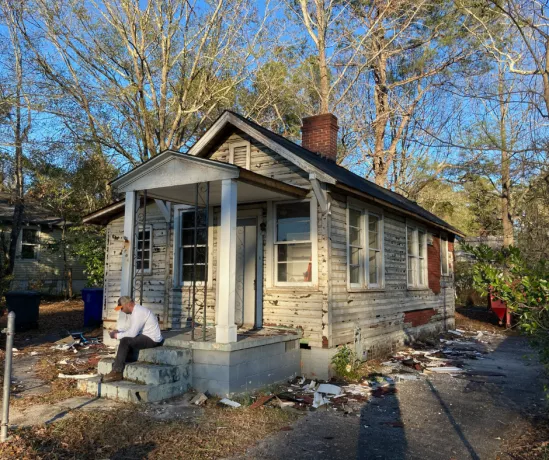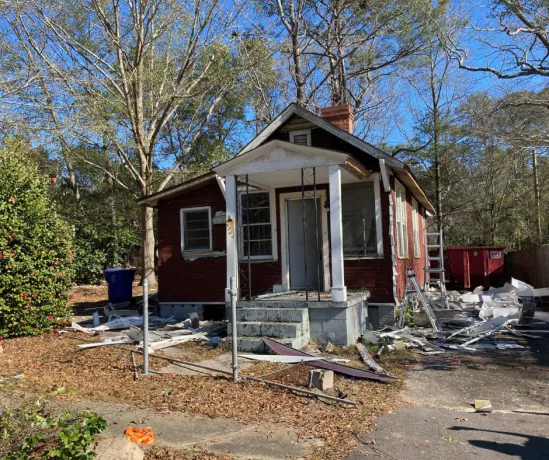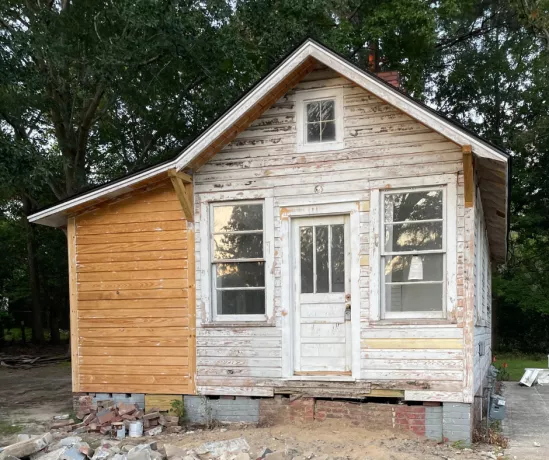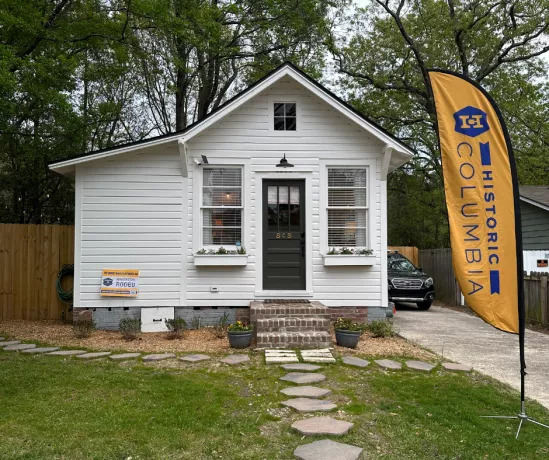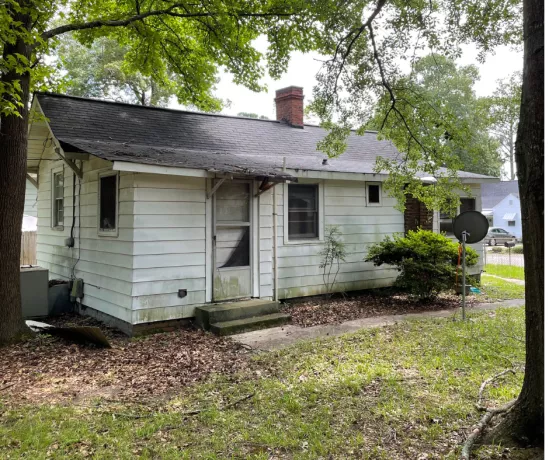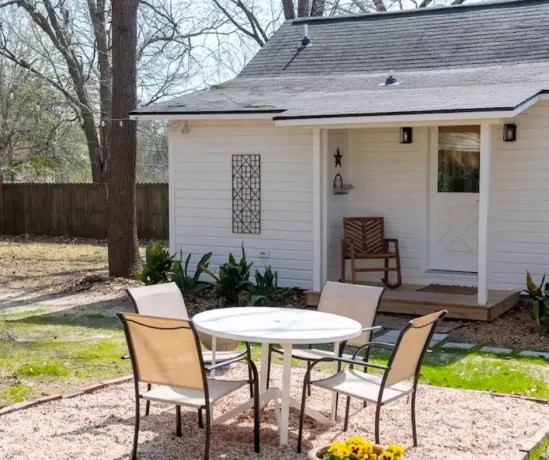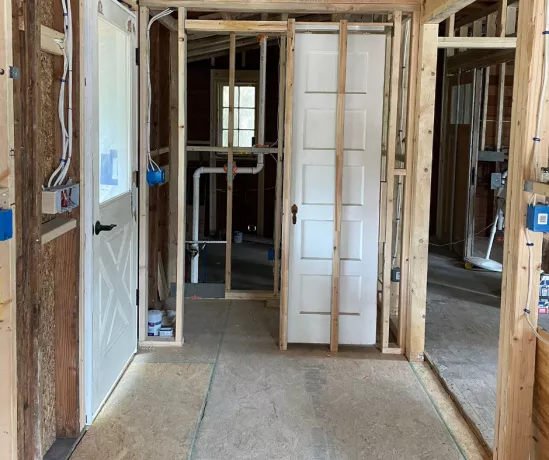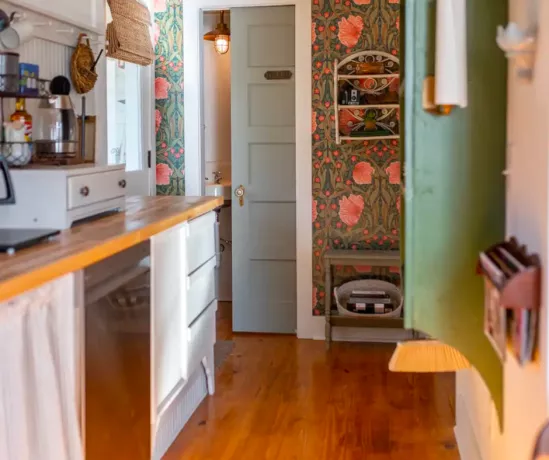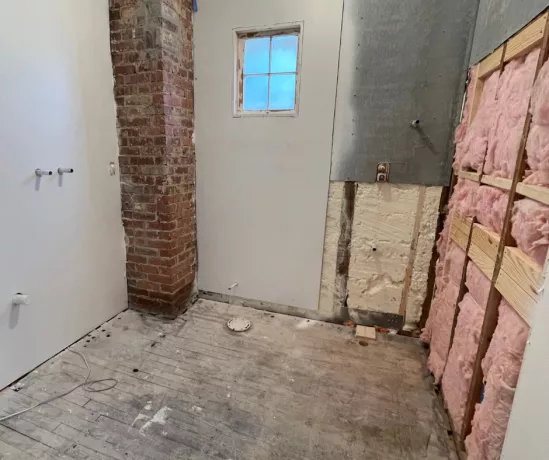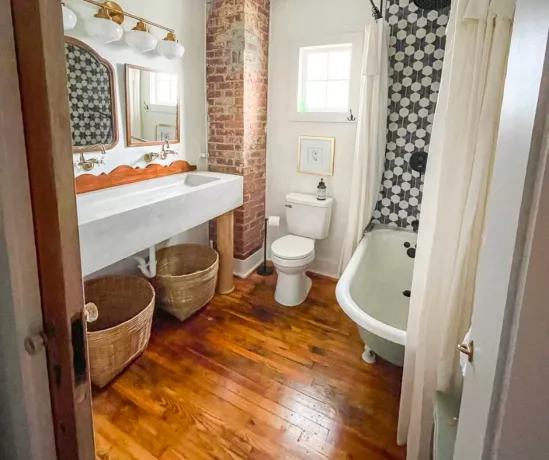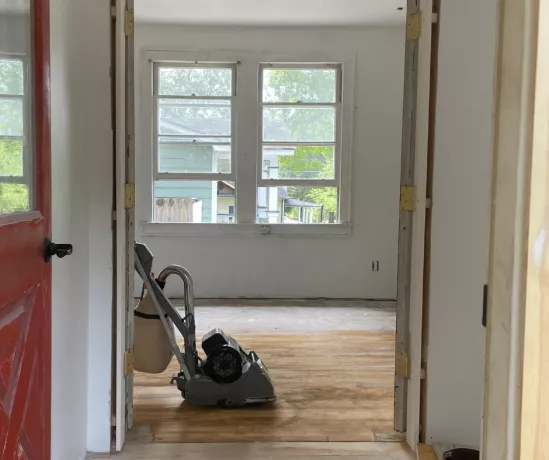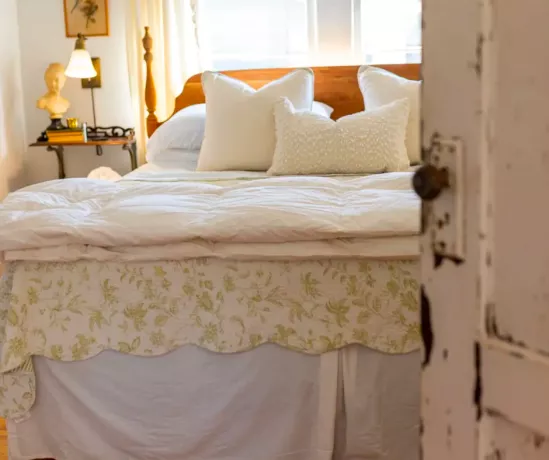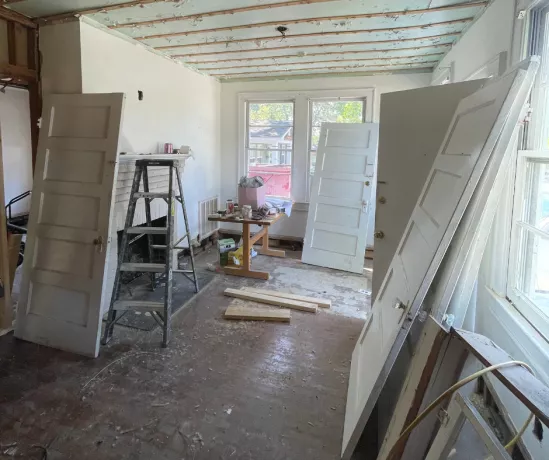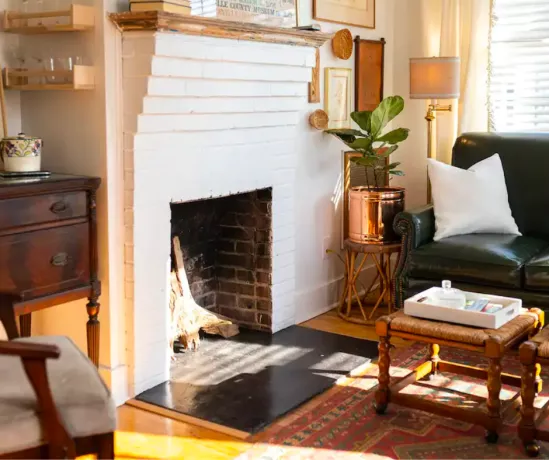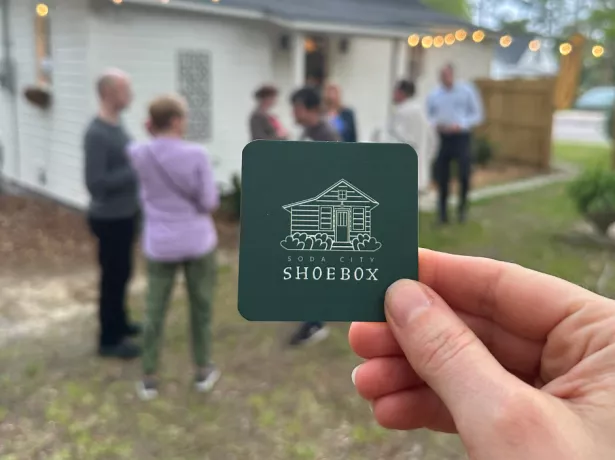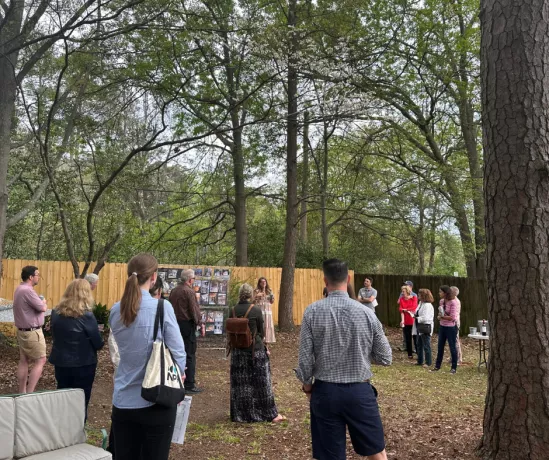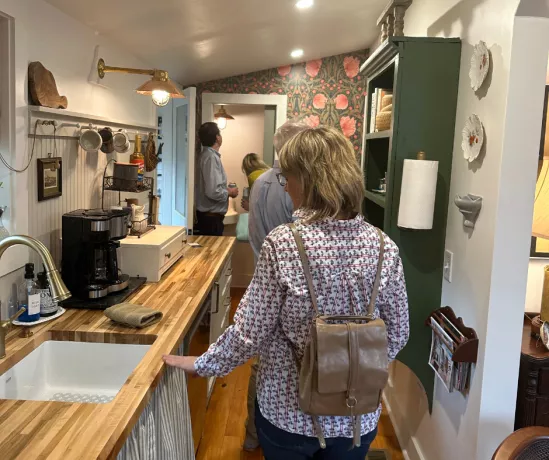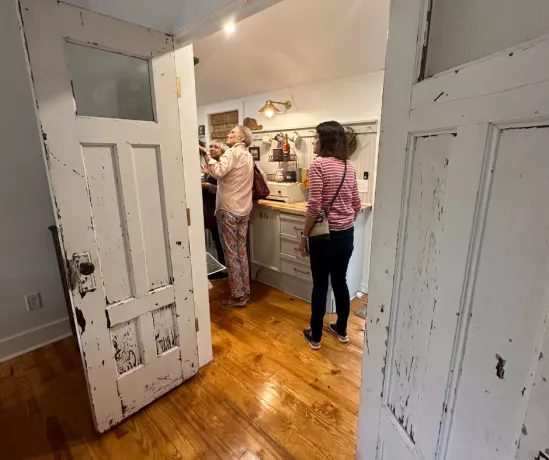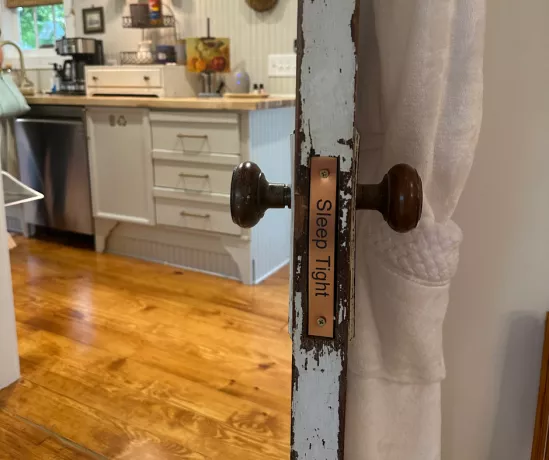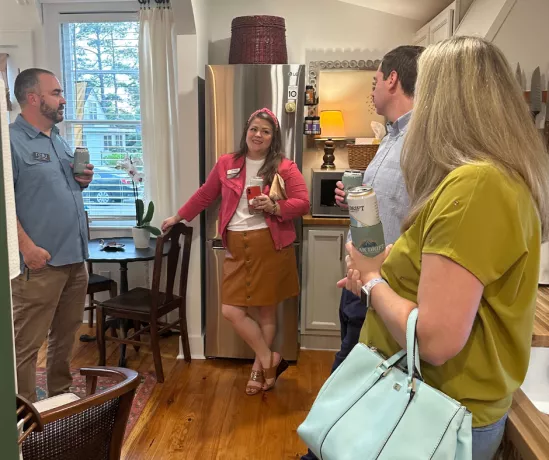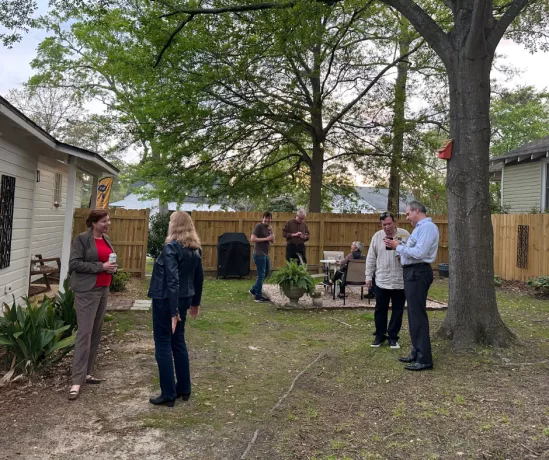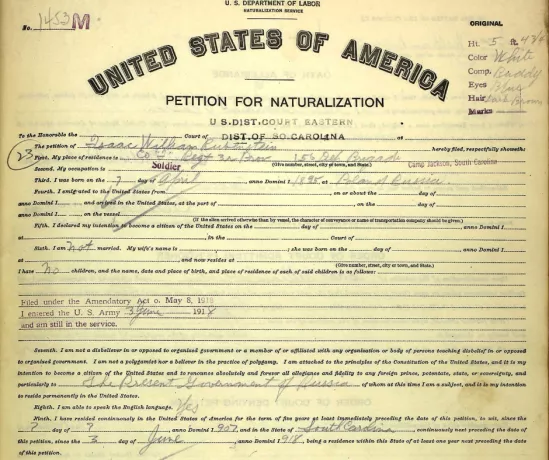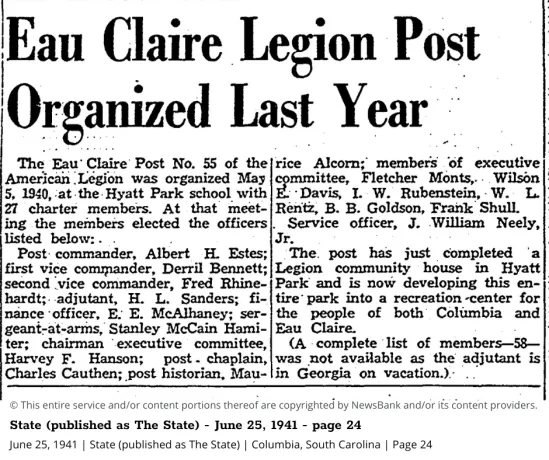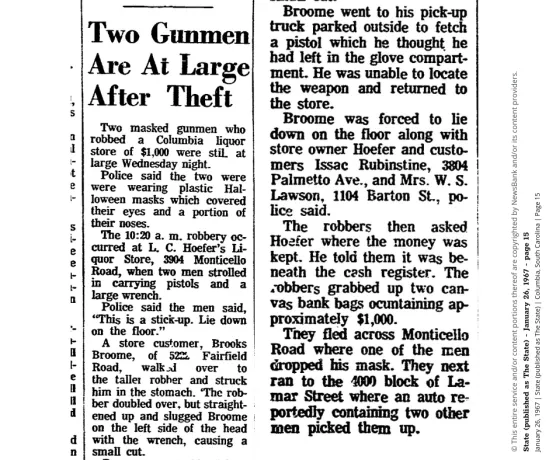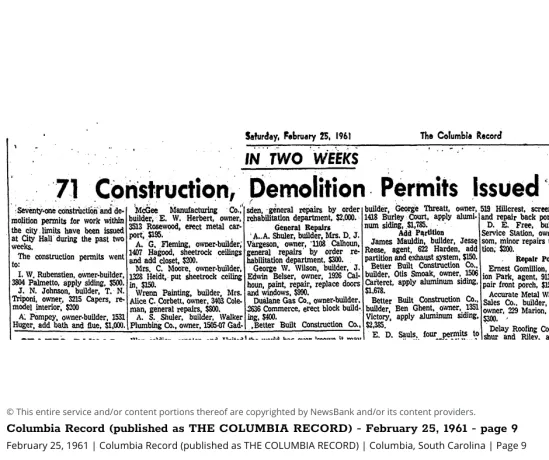Renovation Rodeo | Hyatt Park
Tuesday, March 28th 2023
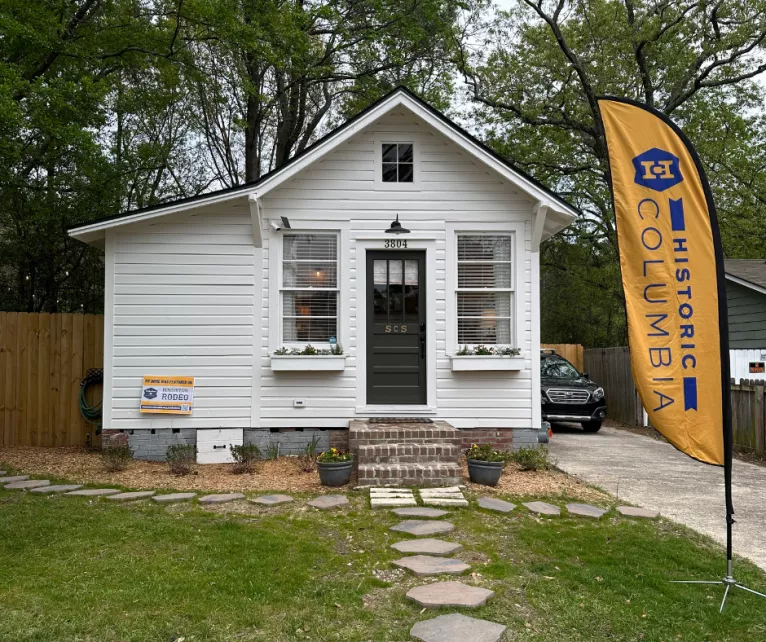
Palladium presented Renovation Rodeo | Hyatt Park on Tuesday, March 28, from 6:00 - 7:30 p.m. Nearly forty guests toured a newly renovated Hyatt Park bungalow (which is now a short term rental!), while enjoying beer from Peak Drift Brewing Company, wine courtesy of Republic National Distributing Company, and snacks from Rambo's Fat Cat Biscuits. The homeowner, Ebonn, and contractor from Hamre Construction, both spoke about the renovation process. Additionally, members of the Palladium Board presented their research on both the neighborhood and the home's history. This event was proudly sponsored by Abi Snyder with Assurance Financial and the Garvin Design Group.
Four times a year, Palladium features a property that has undergone—or is undergoing—a killer renovation. From tiny 40s bungalows like this to turn-of-the-century mansions, and everything in between, these events give you a chance to tour properties, learn about their renovation, and have a great time doing it. And they're FREE for our Palladium members!
Neighborhood History
In 1896, Frederick Hargrave Hyatt began buying up land in this area to develop and named the railway he created leading up to it the Eau Claire Electric Railway Company. Eau claire is French for “clear water” and with numerous clear springs here, the name is believed to possibly be a marketing ploy to contrast with the poor quality of the water in the city of Columbia at the time. The crown jewel of this new development would be the Hyatt Park Casino which would be built in Hyatt Park. All of which Frederick Hyatt named after himself. Hyatt Park is only two blocks from this home.
Opening in July of 1987, The State newspaper described the Hyatt Park Casino as such:
The big building is situated near the center of Hyatt Park, which has in the last month been transformed into a place of beauty. It is only a stone’s throw from the park’s electric railway station. It is built like an East Indian bungalow, and is surmounted by a steep and attractive roof. The main hall is fully 80 feet long and almost as wide. The floor is a beautiful one. Leading into the hall are large double doors, front and back. There are, besides, plenty of windows. The building is equipped with heating apparatus for cool weather. Across the front of the building will be a large and handsome sign painted by Hamiter [artist for The State], bearing the inscription, ‘Hyatt Park Auditorium, 1897’.
Broad stairways lead up from the ground to the piazzas in the front and back. The whole building is surrounded by piazzas 20 feet wide, from which an excellent view can be obtained of the city in the distance. The piazzas are supported by 40 brick pillars about ten feet or more high. Underneath the main floor are gentleman and ladies’ toilet and dressing room, which will be supplied from a tank which has been erected nearby. There will be an ample supply of pure water from the springs in the park. Close by these rooms will be bowling alleys, shooting galleries and so on. The Hyatt Park spring is but a few steps from the rear of this structure.
In addition to this, a zoo was soon added, with possums, monkeys, a coyote, an ocelot, a bear, and more.
This was not a gambling casino but rather a casino in the 19th century sense: a place that hosted civic town functions, including dancing, music listening, and sports. Gambling and drinking was not allowed.
In 1899, an African American group was raising funds to buy land near the casino for a cemetery which caused Hyatt and his 21 white neighbors to quickly create the town Eau Claire, elect officials and issue their first ordinance; a rule against new cemeteries in the town limits. With little time to survey a potential town boundary, they simply agreed on a circle, radiating out from a point on the Winnsboro Road near the Hyatt Park auditorium, with a diameter of two miles.
Surprisingly, after the events above, one block from this house, in July of 1901, Lincoln Park was opened for African Americans. It was one block west of Hyatt Park, said to be similar and included an auditorium, theater, and lake with the park being well lit with electricity. On opening night, 4,000 people showed up for a gala performance and entertainment brought packed audiences for subsequent performances which were to occur on Monday, Wednesday and Friday evenings. This seems to be very short lived though as the last event spoken about in The State newspaper was in September 1901 and by 1903, Hyatt Park and Lincoln Park had merged and there were talks of building a pool in the center of what was Lincoln Park which was now being called Hyatt Park. This may have coincided with the Shandon Pavilion being renamed Douglas Park and given to the Black community. Today Lincoln Park is still a park and is described on the Columbia Parks and Recreation website as a natural wooded area of 6.58 acres with no other amenities.
The Hyatt Park Casino was razed in 1915 with The State newspaper saying at the time that the casino had been closed for several years. Interestingly, in that same 1915 article, they also stated that Columbia’s first moving pictures were probably shown there.
Home History
The home is a 600-square-foot Craftsman style bungalow, built ca. 1938, with symmetrical front facing gable supported by timber eave brackets. The home features a lean-to shed roof addition to the left side, German lap siding over a brick foundation and crawl space, and 2-over-2 horizontal lite windows whose form suggests they were installed sometime in the 1950s or later. The interior retains hardwood floors, 5-panel Craftsman style painted wood doors, as well as a central brick fireplace.
In 1938, Isaac William Rubinstein [1895-1985] bought two lots on Palmetto Avenue for $200 which would be about $4,200 today. The address 3804 Palmetto Avenue begins showing up in the city directories the next year as the residence of Mr. Rubinstein and is soon also listed as a furniture repair operation owned by him.
We know from his naturalization records that Rubinstein was 5ft 5in, had dark brown hair, blue eyes and was born in Poland, which was still part of Russia at that time. He had moved to the United States in 1907 and in 1918 was stationed at Camp Jackson as a soldier in WWI. This possibly was his initial connection to Columbia.
A June 25, 1941, article lists him as one of the founding executive committee members of the Eau Claire Legion Post at the Hyatt Park School, along with 27 other charter members.
On February 25, 1961, Rubinstein applied for a building permit to install new siding on the home.
In January 1967, The State newspaper reported that Rubinstein was the victim of a “stick-up” at the local L.C. Hoefer’s Liquor Store (currently the Columbia North Precinct police station). “Two men strolled in carrying pistols and a large wrench,” but another man in the store “walked over to the taller robber and struck him in the stomach. The robber doubled over, but straightened up and slugged Broome on the left side of the head with the wrench, causing a small cut.”
Isaac Rubinstein died in 1985 at the age of 91 with his only surviving family member being an 81 year old sister living in Massachusetts. He is buried in the Hebrew Benevolent Society Cemetery on Blanding Street.
Beginning in 1987 and until 1991, Patton Properties listed the home as a rental property.
The above research was compiled by members of the Palladium Board education committee. Efforts are being made to secure proper citation. Images courtesy of Ebonn Twilley and Historic Columbia.
Enhance Our City
Palladium
Palladium members don't just learn about Columbia's past - they have a say in its future. Our fundraising events support Historic Columbia's important preservation and advocacy work, which in turn helps preserve the charm and vitality of the city we call home.

